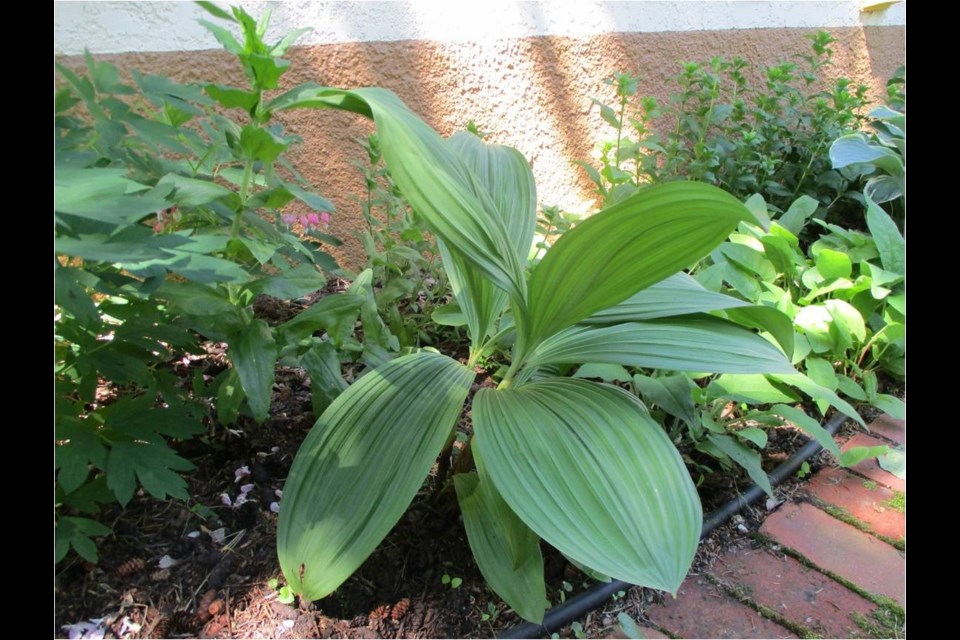One of my gardening friends gifted me with a little seedling about seven years ago. The instructions were to plant it in full to partial shade, in rich loamy soil with good drainage. Shade is a relatively easy commodity in my yard, moist shade not so much. I decided to situate my new treasure close to the house and the hose, in the hopes that I would remember to water it regularly.
The first few years my seedling presented itself as similar to a hosta, a plant grown mainly for its foliage. But it was quite distinct in that the leaves grow from the centre in a whorl. As well, the wide leaves sported veins that grew parallel to the centre, giving the 30cm (12 in) leaves a beautiful pleated appearance. I was very happy with my new addition and over several years I watched it grow a little more robust. During the fifth year, lo and behold, a spike-like flower started to form in early June. By July, the flower stalk had attained a height of about 150cm (5 ft). Its flower stems extend outwards to a width of about 60cm (2 ft) with dark brown to dark purple flower florets appearing on little stems about 1cm (.5 in) apart.
Even though Veratrum nigrum might be known in some gardening circles as black false hellebore, it is a member of the Melanthiaceae family and is in no way related to the real hellebores. Veratrum nigrum is native to Eurasia, from France and Germany to Russia, Mongolia and China. It has been cultivated in European gardens since the 1770. Charles Darwin grew it in his garden in the 1840s. It is often used as a backdrop for brighter coloured flowers and plants such as goatsbeard and meadowrue. Sources list it as a zone 4 to 8 plant, but in a sheltered location away from drying winds it seems to do quite well in my Saskatoon garden.
It blooms from June until late September. Seed pods start appearing in early September. Although they are generally described as crimson, so far on my plant they are a green colour. Perhaps our season is not long enough for the pods to mature. Nor have the seeds on my plant yet produced seedlings. Last year I distributed some seeds in my garden beds but I had no germination. The plant can also be propagated by division, but I loathe to uproot my baby when it seems to be relatively happy in its location. Because the pods adhere quite well to the plant, it also creates great winter interest.
During the next few years I intend to leave the stalks up through the winter in hopes that it will eventually produces seedlings naturally. Friends will have to be patient and wait for this to happen. I seldom see slug damage in my yard, but in spring, there were signs of a slug presence on the leaves.
Although dark, bold and beautiful, Veratrum nigrum is also dangerous if ingested by humans. All parts of the plant are toxic when taken internally, especially the roots. Its toxic qualities were known and mentioned by Lucretius (ca. 99 BCE) and Pliny the Elder (ca. 23AD). Ingestion can also cause a combination of low heart rate and low blood pressure resulting in death. During the 1930s, Veratrum extracts were tested as a treatment for high blood pressure, but patients had too many adverse side effects, so the trials were abandoned. The toxic qualities of this plant may well be the reason that Veratrum seeds, or this plant are a rare find in Canada and the United States. But well worth a try if you come across it during your travels through greenhouses or garden centres.
This column is provided courtesy of the Saskatchewan Perennial Society (SPS; [email protected] ). Check our website (www.saskperennial.ca) or Facebook page (www.facebook.com/saskperennial) for a list of upcoming gardening events




